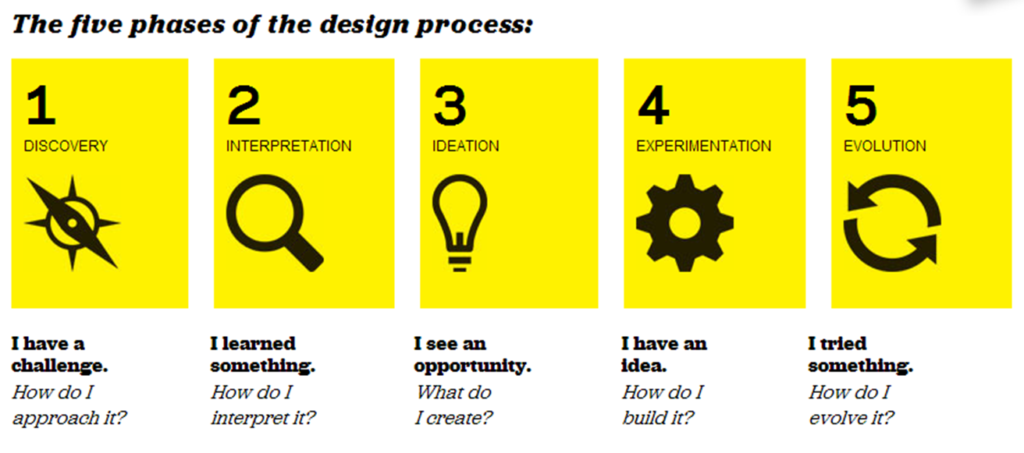Table Of Content

As you’d expect, many large corporations have also adopted design thinking. IBM has adopted it at a company-wide level, training many of its nearly 400,000 employees in design thinking principles. It is also important to interview and understand other stakeholders, like people selling the product, or those who are supporting the users throughout the product life cycle.

Stage 5 in the Design Thinking Process: Test
The journey of design thinking commences with a crucial first step—empathy. In this initial stage, designers and problem-solvers immerse themselves in the world of the end-user, seeking to understand their needs, desires, and challenges on a profound level. This isn’t a casual observation – it’s a deep dive into the user’s experiences. Empathy involves conducting interviews, surveys, and even shadowing users in their daily routines.
Stage 1: Empathize (It’s about them, not us)
They wanted people to get customized and affordable food delivery at the tap of a button. Give the user the prototype you have created and don’t explain or elaborate on it. Leaving users in the dark will provide for legitimate reactions as people explore and use it for the very first time. You can begin by considering what stood out to you when you were engaging with and observing people.
Stage 2: Define (What’s the problem?)
After enrolling in a program, you may request a withdrawal with refund (minus a $100 nonrefundable enrollment fee) up until 24 hours after the start of your program. Please review the Program Policies page for more details on refunds and deferrals. No, all of our programs are 100 percent online, and available to participants regardless of their location.
All design thinking activities—from empathizing to prototyping and testing—keep the end users front and center. For example, teams may jump from the test stage to the define stage if the tests reveal insights that redefine the problem. Or, a prototype might spark a new idea, prompting the team to step back into the ideate stage. Tests may also create new ideas for projects or reveal insights about users. We hope this comprehensive guide to design thinking examples could throw light on what this problem-solving methodology can do.
Examples of Design Thinking in Business
This aspect was crucial as many existing children's toothbrushes on the market were essentially scaled-down versions of adult products, lacking consideration for a child's grip strength. Subsequently, the prototype underwent testing with young users, who were observed while using the product. The team also incorporated vibrant colours and engaging graphics to appeal to children and make them look forward to brushing their teeth. UberEats stands out among other delivery services as one of the fastest-growing platforms. Unlike a retrospective approach, which focuses on refining existing models, UberEats opted for a forward-thinking strategy, emphasising the importance of creativity and user-centric design from the outset. When it comes to actively addressing user pain points, Airbnb has always focused on human-centric design.
To reach this the municipalities started several initiatives with design thinking. In these initiatives one of the objectives was to find out how design thinking can help us to develop innovative and inclusive services. To research what design thinking contributed, we evaluated the pilots with participants. We’ll end with one of the classic design thinking examples, which comes from Bank of America. Invision’s case study shares how the bank partnered with design consultancy IDEO in 2004 to understand how to get more people to open bank accounts. This highly successful banking initiative came out of the design thinking research the IDEO team did where they found savers were intentionally rounding up when writing checks.
Health Care Providers Can Use Design Thinking to Improve Patient Experiences - HBR.org Daily
Health Care Providers Can Use Design Thinking to Improve Patient Experiences.
Posted: Thu, 31 Aug 2017 07:00:00 GMT [source]
Did You Know Design Thinking is a Non-Linear Process?
Traditionally, companies begin with feasibility or viability and then try to find a problem to fit the solution and push it to the market. Design thinking reverses this process and advocates that teams begin with desirability and bring in the other two lenses later. Wicked problems demand teams to think outside the box, take action immediately, and constantly iterate—all hallmarks of design thinking. Observations of children's interactions informed a product that revolutionised programming for kids, simply by enhancing interactivity and user-friendliness. Oral-B's children's toothbrush exemplifies the power of accurate observation in driving success.
Learn more about Design Thinking (DT)

In this use case the cities of Aalborg and Rotterdam share their findings obtained from design thinking initiatives. The use case is written for other professionals in the field of design in public organizations. IDEO did not invent design thinking, but we have become known for practicing it and applying it to solving problems small and large.
You’ll get the best outcomes if you bring insights, perspectives, and expertise from multiple stakeholders. That includes at the Prototype and Test stages, as everyone will have ideas to contribute to help you bring solutions to life. To get the most out of the process, everyone needs to collaborate and communicate effectively. Teams that are good at collaborating drive the best outcomes, while also making it an enjoyable experience working together.
The company invested heavily in its social media strategy and invited users to collaborate on its design processes. It crafted a marketing strategy that connected with the values of a younger customer base, that was “cool and innovative,” and that could convince younger people to become loyal customers. While design thinking has garnered widespread acclaim, it’s not immune to criticism, and one prevalent concern is the risk of over-hyping.
Herbert Simon’s 1969 book, "The Sciences of the Artificial," has one of the earliest references to design thinking. David Kelley, founder of the design consultancy IDEO, coined the term “design thinking” and helped make it popular. Design consultancy IDEO’s designkit is an excellent repository of design thinking tools and case studies. Aims to deliver that solution and continuously iterate on the live product. It primarily originates from software development and borrows from disciplines such as manufacturing and project management. The Head, Heart, and Hand approach by AIGA (American Institute of Graphic Arts) is a holistic perspective on design.
Master content design and UX writing principles, from tone and style to writing for interfaces. Learn how to plan, execute, analyse and communicate user research effectively. An interdisciplinary program that combines engineering, management, and design, leading to a master’s degree in engineering and management.
The iPhone revolutionized the smartphone industry by focusing on user experience, simplicity, and intuitive design. Apple’s design team used empathetic research to understand user needs and behaviors, resulting in a device that seamlessly integrates hardware and software to provide a delightful user experience. Implementing design thinking within organizations can be a journey fraught with challenges.
Run user interviews and use Hotjar Surveys and Feedback widgets to send out a mix of full-scale surveys and quick questions on the fly. Watch Recordings to see what your users see and identify their pain points. Now focused on growth into new markets and growing from 3% to nearly 25% of Uber's revenue, the UberEats design team hasn't had time to slow down. From tech products, healthcare, travel, and even non-profit community programs, design thinking has proven to be a useful problem-solving tool for innovators and entrepreneurs alike.

No comments:
Post a Comment